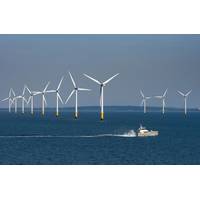U.S. Okays ConocoPhillips Alaska LNG Exports
The U.S. Department of Energy approved ConocoPhillips (COP)' application to export about 40 billion cubic feet of natural gas from its Kenai liquefied natural gas export terminal in Alaska over the next two years starting Feb. 19.
The Kenai facility was the first LNG export facility in the United States. Most of the gas exports from Kenai have gone to Japan since the plant entered service in 1969.
In a few weeks, the fist LNG export terminal in the lower 48 states is expected to enter service at Cheniere Energy Inc's Sabine Pass facility in Louisiana.
The federal approval will allow ConocoPhillips to export gas to any country the United States has a free-trade agreement with or any other country with which trade is not prohibited by U.S. law.
With growth in pipeline exports to Mexico and LNG exports to the world, the United States is expected to transition from a net importer of gas to a net exporter by 2017 as the nation's shale gas production continues to grow, according to federal energy forecasts.
The United States was last a net exporter of gas in 1957.
In 2015, the U.S. exported on average 0.07 bcf per day from Alaska, according to federal data. That is expected to rise to 0.5 bcfd in 2016 and 1.33 bcfd in 2017 with the startup of the liquefaction units at Sabine Pass and other LNG facilities, according to federal forecasts.
For comparison, the United States produces about 80 bcfd of gas, according to federal data.
ConocoPhillips last received an export license from the federal government for the Kenai plant in April 2014. It also authorized the company to export about 40 bcf of gas over a two-year period. ConocoPhillips sought that license after the plant's old export license expired in March 2013.
Reporting by Scott DiSavino











